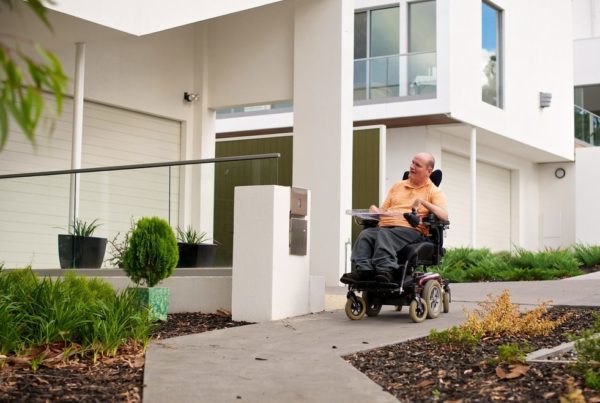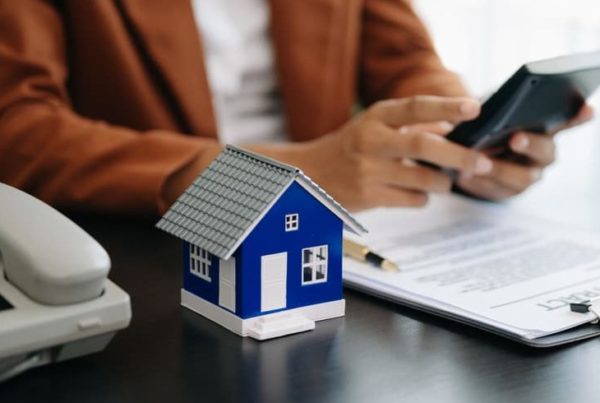There is strong demand for specialised housing for people with disability in Australia.
Government regulation mandates the inclusions and minimum standards of SDA property and as such, associated building costs are high.
Converting your own home to an NDIS investment property may be an innovative way to avoid the cost of an additional home loan, while providing accommodation to vulnerable people with a disability.

So, can you rent your own home to the NDIS?
The quick answer: yes: but it may not be the most profitable way to get involved with NDIS investing.
In this article we discuss what is Specialist Disability Accommodation (SDA), the minimum design standards to receive funding and other important considerations. We will talk about how to get involved with NDIS housing investment, and list alternative investment routes for existing properties.
How does NDIS funding work?
The NDIS participant receives funding from the Australian government for a particular type of rental property. The purpose of this scheme is to allow residents the opportunity to live independently to some extent, giving them a higher quality of daily life while still maintaining contact to support persons.
NDIS property investment is a proactive avenue to increasing your portfolio and is almost guaranteed to provide a secure rental income. Specialist disability accommodation has higher than average market rents compared to standard investment property.
What is NDIS SDA Property?
The National Disability Insurance Agency (NDIA) is the organisation that oversees the NDIS.
The National Disability Insurance Scheme (NDIS) provides funding to people with extreme functional impairment and/or high support needs, so that they can access support services, acquire some independence and a live high quality of life. Participants often require specifically designed housing and some level of assistance with personal care.
Specialist Disability Accommodation SDA refers to housing that is built under strict adherence to government standards and provided to NDIS approved tenants. NDIS participants receive SDA payments that cover the rental cost.
What Makes an SDA Approved House?
This specialist housing is made to support a tenant with a disability and has a particular set of accessible features to make the home safe and user-friendly for the tenant.
Approved SDA housing can be enrolled as one or more building type; robust, improved liveability, fully accessible or high physical support. As of July 1st 2021, all enrolments applications for new SDA properties are required to include a certificate from an accredited SDA assessor nominating the specific design category the dwelling is to be enrolled into.
An SDA provider must be registered through to NDIS. Retrofitting an existing property to be eligible as an SDA home is possible, though it is likely to require a large amount of capitol.
Modifying Your Property for NDIS Investment
There are a few options for retrofitting existing property to qualify as SDA:
- If the property was issued with a certificate of occupancy for use as an SDA on or after 1 April 2016 and has been designed under the previously recognised Liveable Housing Guidelines (LHA): you may be able to have your property upgraded to be registered as a ‘new build’ SDA.
- To renovate an existing property that has not been registered previously as an SDA dwelling, it must have a certificate of occupancy on or after 1 April 2016 AND be refurbished to meet the minimum design standards for the selected design category.
- The home belongs to a person intending to provide SDA for themselves or the home is already enrolled to five or fewer residents.
Enrolling as Existing Stock
Where the SDA type is existing stock or legacy stock, evidence must be submitted that:
a) The dwelling has accommodated a person with high support needs and/or extreme functional impairment between 1 July 2013 and 1 December 2016, AND,
b) a resident who received disability related supported accommodation payments (disability support pension) from Government between 1 July 2013 and 1 December 2016.
The NDIA is currently enrolling properties as existing stock, though a review is underway to re-evaluate this process as the new build NDIS scheme has been fully transitioned. The existing stock category may be deleted in the near future.
To determine whether you have a new build, existing stock, legacy stock or an ineligible home, use this simple online calculator.
SDA Approved Dwelling Requirements
The National Disability Insurance Scheme outlines the minimum standards for accommodation to receive SDA funding in the SDA Design Standard document.
Standard housing generally does not comply with the strict requirements to be enrolled with the NDIS as an SDA dwelling. When converting an existing property, home modifications are required to support NDIS participants with physical and mental disability. This will include elements such as:
1. Internal passageways to be a minimum width of 1200mm
2. Step-free doorway thresholds and transitions external and internal doorways
3. Task lighting to be provided to all kitchen work spaces
4. Corner showers at a minimum size of 1160mm x 1100mm with a hobless recess
5. Slip resistant flooring in kitchen, bathroom and laundry areas to be a minimum of P3 or R10 rating
The cost of modifications to housing can be high; the changes will be targeted towards improving access to the property and assisting tenants to live independently. NDIS service providers will only be able to enrol as SDA if the minimum standards are met [1].
Important Considerations for SDA Property
The location of your NDIS property is extremely important; NDIS tenants require certain services and amenities to be near by.
Ideal properties are a short distance from public transport, tenant families, and other supports including NDIS services.
The right location equips NDIS participants with independent living opportunities. The most highly sought after homes are in a community that facilitates social connections and promotes a sense of belonging. Remember, your tenants ultimately get to choose where they live: a period of no tenancy leaves you vulnerable to some financial loss.
How Do You Get Involved With Investing in SDA
Many property investors are wondering, can I rent my house as SDA?
In short: it is possible but it may not be financially feasible.
Extensive modifications are likely required to qualify as SDA or to meet accessibility standards. The NDIS will provide funding for home alterations in some cases, though this requires assessment from an occupational therapist and is generally limited to modifications done to one’s own home in order to remain living in it after the onset or progression of their own disability. Furthermore, if modifications are funded through the NDIS, the home then can’t be registered as SDA.
A good start would be to consult with a specialist property management firm. SDA and properties that can be leased to NDIS Service Providers are in high demand and tenancies are usually long-term.
NDIS properties have a much higher cash flow than traditional rentals. NDIS rental yields are 8-14% compared to 3-5% for standards residential rentals.
The best part?
A typical SDA home will generate anywhere from $40,000-$55,000 profit per year. That kind of return is hard to ignore.
Newly built SDA property that meets the government guidelines guarantees eligibility. Tenants are typically in for the long haul: once they are comfortable they choose to stay.

Get expert help from our
Loan Specialists
Alternative Property Investing Routes for Existing Properties
Should NDIS property investment not be for you, there are several other profitable avenues you should explore. Other types of housing and accommodation to generate rental income include:
- Long-term leases to Defence Housing Australia (DHA)
- Turn your property into an Air BnB
- Lease out a single room in your home
- Mainstream rental properties; privately or through an agent
Summary
Now is a perfect time to invest: The Federal Government is incentivising NDIS property investment with the promise of generous rental returns through SDA payments.
For a property to be eligible for funding, it must adhere to a strict list of minimum standards, and modifications are often required. You must provide an NDIS home that is well suited to tenants with a disability that is in a community with access to nearby support services.
NDIS investment property is an innovative way to increase your property portfolio, though retrofitting your existing property may not be to best way to get into the market.
Consider the minimum standards, the strict certification processes and location: are all of these requirements met? In the highly likely case that they are not, you’re putting your hand up for major renovations at a high price point.
Investing in a new NDIS build, or other investment property may be the best option for you, or look into creative ways to generate a reasonable rent contribution from your existing property.
Disclaimer: This article is not intended as legal, financial or investment advice and should not be construed or relied on as such. Before making any commitment of a legal or financial nature you should seek advice from a qualified and registered Australian legal practitioner or financial or investment advisor.
References
Let’s get to know each other!
Talk to us about your home loan needs and we will package up a home loan with the features you want and tailor the rate to your circumstance.






